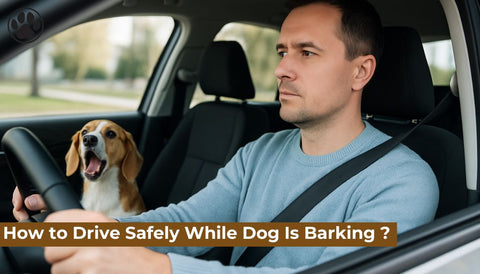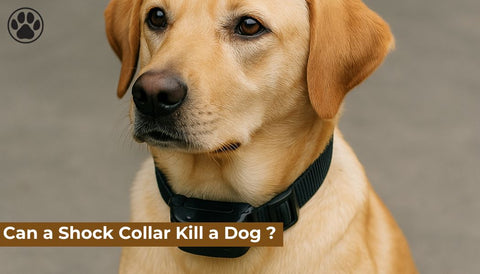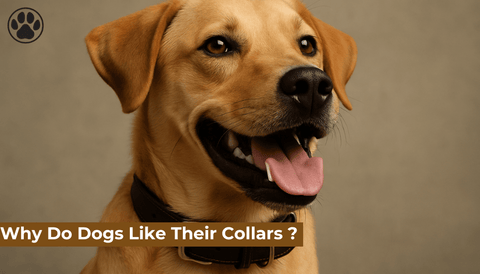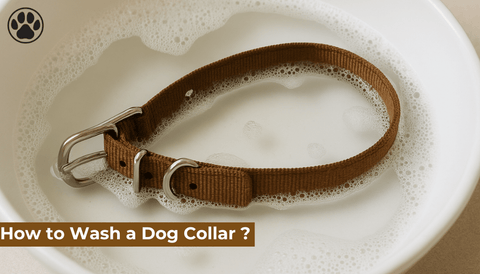
How Tight Should a Dog Collar Be ?
of reading - words
Choosing the right collar for your dog is more than just a style decision — it's a crucial part of your pet’s comfort, safety, and daily routine. Whether you're walking your dog in the park or just relaxing at home, the fit of the dog collar plays an essential role in your dog’s well-being. So, how tight should a dog collar be? This article will break down everything you need to know to get it just right.
The Importance of a Properly Fitted Dog Collar
A dog collar that’s too tight can cause discomfort, breathing issues, or even injury. On the other hand, a collar that’s too loose could easily slip off, increasing the risk of your dog running off or getting lost. A properly fitted collar ensures both safety and control, while respecting your dog’s comfort and natural movement.
General Rule: The Two-Finger Test
The golden rule among dog owners and veterinarians is the two-finger test. This means you should be able to comfortably slide two fingers between your dog’s collar and their neck. This ensures the dog collar is snug but not restrictive. If you can’t fit two fingers, it’s too tight. If you can fit more than two, it may be too loose.
How to Measure Your Dog’s Neck
To get the most accurate fit for your dog’s collar, follow these steps:
-
Use a flexible tape measure
-
Measure around the base of your dog’s neck, where the collar would naturally rest
-
Add 1 to 2 inches to the measurement depending on the dog’s size and fur density
-
For puppies, always leave a little extra room for growth and check regularly
This measurement will help you select the correct collar size based on the manufacturer’s sizing chart.
Types of Dog Collars and Their Fit
Standard Flat Collar (How Tight Should a Dog Collar Be)
A standard flat collar should follow the two-finger rule and sit comfortably around your dog’s neck without digging into the skin or rotating easily.
Martingale Collar
This type of collar tightens slightly when your dog pulls. It’s often used for training or for breeds with narrow heads like Greyhounds. Fit the collar so it’s snug but not choking when tightened.
Harness vs Collar
For dogs that pull or have neck issues, a dog harness may be a better solution than a collar. But even harnesses need proper adjustment to avoid rubbing or slipping.
Signs That Your Dog’s Collar Is Too Tight
-
Visible redness or irritation under the collar area
-
Loss of fur or bald spots
-
Choking or coughing when on leash
-
Your dog is constantly scratching at the collar
-
Difficulty breathing or swallowing
If you notice any of these symptoms, it’s time to reassess the fit of the collar immediately.
Signs That the Collar Is Too Loose
-
The collar slips over the head
-
The dog chews or licks the collar
-
The collar rotates freely around the neck
-
Your dog escapes from it easily
Adjustable Collars and Puppy Growth
If you’re shopping for a puppy, choose a fully adjustable dog collar. Puppies grow rapidly, and their collar should be checked weekly. A collar that fits today could be too tight in just a few days.
Style Meets Function: Our Dog Collar Collection
Your dog’s collar should be functional and stylish. That’s why we’ve created a collection of high-quality, adjustable, and comfortable dog collars to suit every breed and lifestyle. From leather spiked collars to soft nylon training collars, our collection is built to meet your dog's needs.
Each collar is carefully designed with pet health and comfort in mind — using durable materials, secure fastenings, and thoughtful features. Plus, with a variety of colors and styles, your pup can look as good as they feel.
Tips to Ensure Long-Term Comfort
-
Check collar fit regularly, especially for growing puppies
-
Clean the collar to avoid skin irritation caused by dirt and bacteria
-
Rotate collars if possible to let your dog’s neck breathe
-
Use ID tags with your contact information for extra safety
When to Replace Your Dog’s Collar
A dog collar isn’t forever. Over time, even the best-quality collars can wear out. Replace your dog’s collar if:
-
It shows signs of fraying or tearing
-
The buckle or D-ring is loose
-
Your dog has outgrown it
-
The collar smells bad or has mold
Frequently Asked Questions (FAQ)
How often should I check my dog’s collar fit?
At least once a week, especially for puppies or dogs that gain or lose weight.
Can a tight collar hurt my dog’s throat?
Yes, a collar that is too tight can put pressure on the trachea, causing discomfort, coughing, or even long-term injury.
Should my dog wear a collar all the time?
It's generally safe, but it’s a good idea to remove the collar at night or when your dog is resting at home to give the skin a break.
What type of collar is best for training?
Martingale or padded training collars are great options. Just make sure they are used properly and fit correctly.
How can I make sure my collar lasts longer?
Clean it regularly, avoid water damage, and inspect for wear and tear. Rotating collars can also extend their lifespan.




